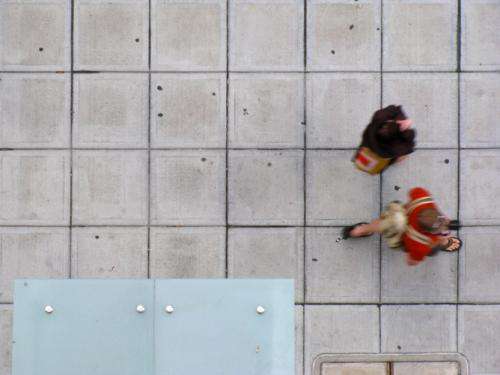Ruling on sharper satellite images poses a privacy problem we can no longer ignore

The US government has lifted restrictions on the use of high-quality satellite images in a move that will be welcomed by industry but could have serious privacy implications for the man or woman on the street.
The sale of high-quality satellite images has for a long time been dictated by an informal agreement between France and the US. Until now, companies weren't allowed to make use of images with features smaller than 50cm. That has meant that details that could make people personally identifiable were hard to come by in services like Google Earth.
Digital Globe, the world's largest satellite company, has lobbied hard for this policy shift so that it could compete with rival satellites being planned by Indian and Chinese firms. Under the ruling, it will now be able to sell images that show features as small as 31cm. While the ruling covers the US, European governments will undoubtedly now face stronger calls to lower their standards to allow the sale of higher-quality imagery.
Eye in the sky
Those working in the space sector will informally admit that satellites designed for Earth observation haven't quite lived up to expectations. Lifting restrictions on images is potentially game changing for them, as it means data will be available at scales that would allow more ground-based objects to be identified. That could make disaster relief efforts easier and environmental monitoring more effective.
Others might feel less comfortable about the fact that lifting the restrictions also means satellites will take on more surveillance roles for agencies like the police. Digital Globe says that new satellites will be able to show "manholes and mailboxes". They are also getting closer to seeing us.
If satellite imagery continues to improve, enabling the identification of individuals, then the issue of privacy will grow in significance. Questions will be raised about whether the public sees technological progress as being proportionate to any collateral privacy impacts.
Facebook founder Mark Zuckerberg has said that expectations of privacy have disappeared in the digital age. Our research at University College London tells a different story. In a survey, 58% of Australian farmers and 75% of UK farmers agreed that satellite monitoring could be an invasion of privacy.
It is possible that the survey respondents had an unrealistic expectation of their privacy rights when being watched from above, but it is these expectations that might make more detailed images even less publicly acceptable.
Dated laws
The restrictions being lifted on satellite images will also expose the fact that our space treaties are dated and impotent when it comes to governing modern satellites. They were drafted between the 1960s and 1980s and do not prevent the purchase of, or access to, satellite pictures. At the moment privacy rights normally have to be protected in an individual's direct environment (the country they live in), but this can be unsatisfactory because data can be generated and distributed outside that environment.
Satellites are increasingly built and operated by companies such as Google and Digital Globe rather than by national space agencies so private interests are being left to control potentially invasive technology, apparently untroubled by regulations.
And confusion is everywhere in the public sector too. There is uncertainty about whether enforcement agencies need to get search warrants or authorisation to acquire imagery. Satellite monitoring does not fall easily within existing safeguards because it is the company that owns the satellite that is actually undertaking the monitoring, rather than the enforcement agency.
What's more, the fact that satellites continually orbit the globe, collecting data as they go, means that any images taken and stored in a routine sweep might not necessarily be classed as directed surveillance. If an enforcement agency specifically tasked a satellite provider to perform targeted surveillance and the satellite was purposely moved to collect an image, that might be different. If not, the enforcement agency finds itself in a convenient grey area.
Skirting the issue
Eye-opening technological progress has been made in satellite imagery over the past 15 years but politicians have failed again and again to address the issue. Governments have focused on how these developments can create opportunities for businesses and the UN Committee on the Peaceful Uses of Outer Space has done nothing either. Privacy issues have been dealt with in courts but these usually find that these kinds of images are not invasive to personal privacy.
More debate is needed about what should be considered acceptable and what constitutes intrusive monitoring from above. It is going to be a major task to balance the opportunities these technologies bring against the rights of citizens but some agreement needs to be reached. And because satellites ultimately operate internationally, these discussions need to take place at a higher level than national governments.
It is great that satellites can see more but this also means that lawmakers will soon be faced with a once-in-a-generation challenge of formulating responses to privacy concerns before technological progress races ahead of them.
Source: The Conversation
This story is published courtesy of The Conversation (under Creative Commons-Attribution/No derivatives).
![]()



















